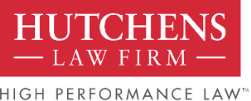Borrowers Face Twin Hurdles Challenging Post-Foreclosure Property Preservation Activities: Security Instruments Permit Entry and Noteholder Not Vicariously Liable for Contractors’ Actions
Property preservation efforts often serve as a flashpoint for conflict when servicing a default portfolio and may lead to affirmative claims against the servicer, its investor, its property preservation vendors and their contractors. In many jurisdictions, there are limited examples of developed cases from which practitioners can formulate defenses. Recent litigation in North Carolina, however, has generated results which can offer servicers and their vendors guidance in defending these claims.
In Vinal v. Federal National Mortgage Association 2015 WL 5535191 (E.D.N.C. September 18, 2015), the owner of nine investment properties brought suit against his lender and its property preservation agents for changing the locks on the properties after he defaulted on his loans. Although he admits in his complaint that the property preservation activities occurred after the default, the owner alleged that the lender had breached the mortgage contract because securing the properties was not “reasonable” or “appropriate”. The owner pointed to his marketing of several of the properties for short sale, the presence of tenants in some others, and his maintenance of insurance on all the properties. The owner further alleged that the contractors damaged one of the properties and entered a gated community over the owner’s express objection. The complaint sought to impose liability on the lender and on the contractors under a number of theories such as fraud, trespass, interference with contract, breach of contract, unfair and deceptive trade practices, and even asserted that the lender and its contractors had engaged in racketeering.
In dismissing the lender from the lawsuit, the Court found that the owner had not sufficiently alleged that the lender exercised sufficient control over its contractors to make it vicariously liable for their actions and that the lender had done nothing outside the normal confines of a debtor-creditor relationship. In dismissing the contractors, the trial Court expressly found that the essential claims in any property preservation dispute – trespass – are barred because security instruments expressly permit entry to secure the collateral upon default. See, also, Hayes v. Self-Help Credit Union, 2014 WL 4198412 (U.S.D.C. M.D.N.C., August 22, 2014) (granting summary judgment without written opinion on many similar claims, but also claims asserting that the property preservation activities violated the FDCPA, caused the plaintiff emotional distress, and that the property preservation had deprived the plaintiff of her civil rights.)
Although on appeal to the U.S. Fourth Circuit Court of Appeals, this decision gives guidance to practitioners defending lenders and their contractors in suits involving property preservation controversies. So long as the contractor conducts the property preservation activities in accordance with prevailing standards and the property preservation is appropriately authorized by the investor, Courts should reject borrowers’ protests to property preservation activities that occur during the foreclosure process.
Published by Jeffrey A. Bunda on June 8, 2016
